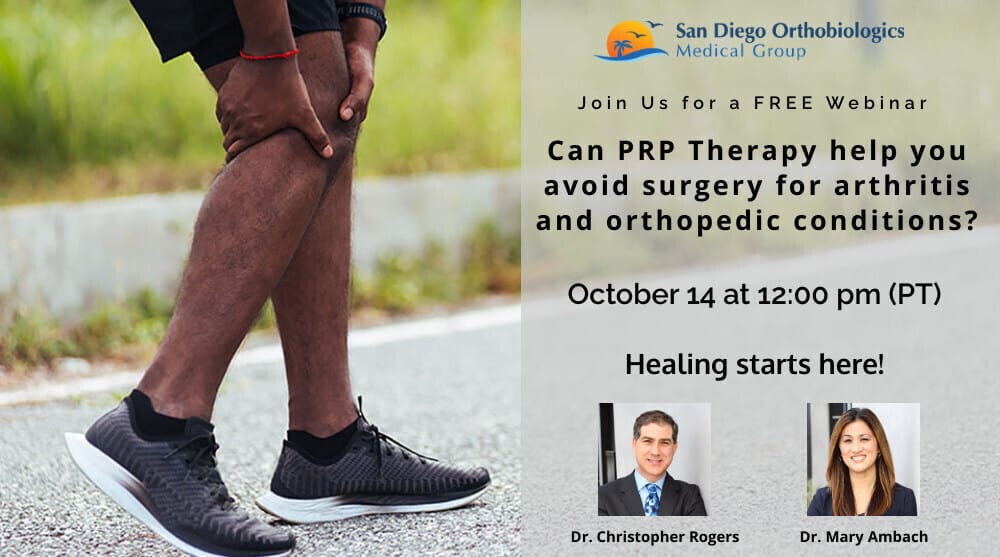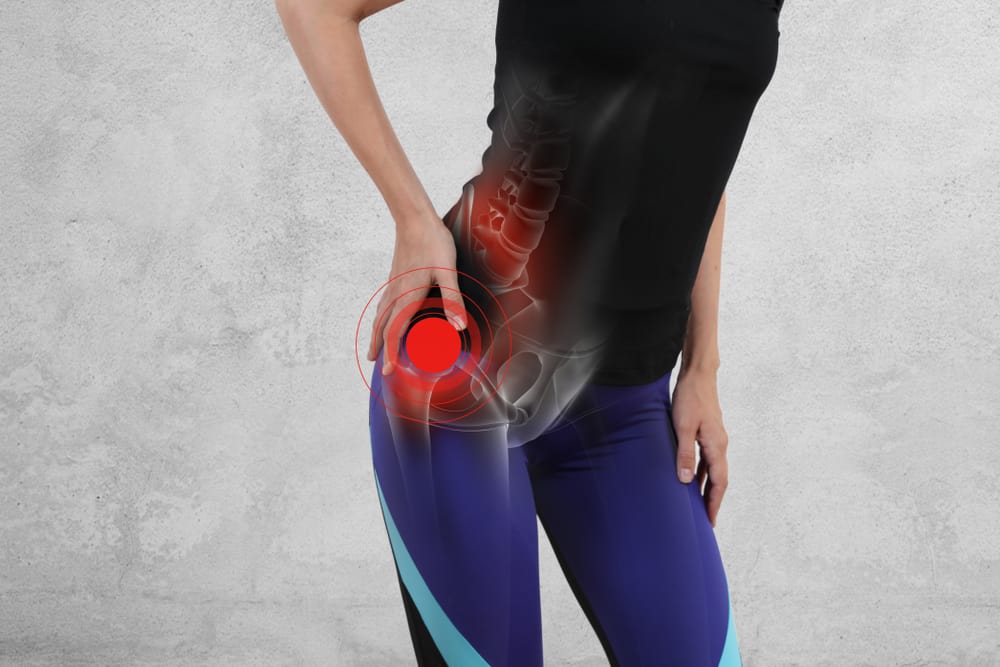
May 6, 2022
Chronic hip pain can impair daily activities while affecting the patient’s quality of life. It can result in mild or severe physical discomfort around the hip area. The prevalence of hip pain increases with age. Chronic hip pain occurs due to an injury or a pre-existing condition like arthritis.
Symptoms of chronic hip pain in adults include soreness, tenderness, and decreased walking tolerance.
Conditions that cause chronic hip pain
Below are some of the conditions that can cause chronic hip pain:
1. Arthritis
Arthritis is a common cause of chronic long-term hip pain in adults. This condition results in stiff and tender joints, pain, and difficulty walking. Arthritis causes inflammation of the hip joint and the breakdown of the cartilage that covers the hip bones. Various types of arthritis that cause hip pain include:
- Osteoarthritis: occurs due to age-related wearing down of the joints’ cartilage. This results in stiffness, swelling, and pain in the hip.
- Rheumatoid arthritis: an autoimmune disorder in which your body attacks the protective lining around the joint, causing fluid build-up. Rheumatoid arthritis destroys joint cartilage and bone, causing chronic symptoms.
- Infectious arthritis: caused by a joint infection that destroys the cartilage.
2. Trochanteric Bursitis
Trochanteric bursitis occurs due to the inflammation of the bursa (a liquid-filled sack close to the hip joint). Joint overuse, hip injury, and posture problems are the common causes of trochanteric bursitis. Repetitive activities can irritate or overwork the hip joint causing inflammation of the bursa.
Although people of all ages can suffer from trochanteric bursitis, the condition is prevalent in middle-aged and older people.
3. Labral Tears
The labrum is the cartilage ring that keeps the thighbone ball in place. Labral tears are common in athletes and ballerinas and cause chronic hip limiting movement.
When you have labral tears, you feel like your hip is locking, clicking, or catching. Usually, pain from labral tears doesn’t go away.
4. Tendinitis/Tendinopathy
Inflammation or degeneration of the tendon are common in older adults and can cause chronic hip pain. Those suffering from tendon injury experience pain, especially when moving the affected hip, mild swelling, and tenderness.
Some causes of tendinitis or tendinopathy include repetitive motions, awkward positions, forceful exertions, and engaging in sports activities.
5. Hip Fracture
Hip fractures are cracks and breaks in the femur – the thigh bone close to the hip joint. An injury or a fall to the side of the hip may cause a hip fracture. Sometimes, hip fractures occur due to health conditions like osteoporosis or cancer that weaken the bones.
Older adults are more likely to get hip fractures, resulting in chronic hip pain. Hip fractures result in sudden and severe hip pain, often requiring immediate medical attention. In most cases, patients require surgery to correct hip fractures and alleviate chronic hip pain.
6. Bone Cancer
Bone cancers occur due to the abnormal growth of bone cells in your body. Chronic hip pain is one of the major symptoms of bone cancer in the hip. Some patients experience a mass or swelling in the hip.
Radiation exposure and hereditary factors have been linked to bone cancer that causes chronic hip pain.
Conclusion
Chronic hip pain is a condition mainly affecting older adults. This condition may hinder your daily activities and decrease your quality of life. Some conditions behind chronic hip pain include hip osteoarthritis, bursitis, and tendinopathy; most of these injuries respond well to regenerative treatments. If you experience any signs of chronic hip pain, seek immediate medical assistance. You can book an appointment with us by filling out this form.

Feb 6, 2022
Whether due to degenerative arthritis or injury, the Agency for Healthcare Research and Quality reports that more than 450,000 total hip replacements are performed in the United States every year.[i]
Even though this is major surgery and requires hospitalization and lengthy rehab, many patients who suffer from chronic hip pain believe they have no other options.
Thanks to the advances in the field of regenerative medicine, they do.
Why Do My Hips Hurt?
Hip degeneration or tissue damage can result in pain, tenderness, “clicking” and reduced range of motion. Pain can be localized in the front, side, or back of the hip.
Hip pain can have many causes, including:
- Degenerative osteoarthritis. Occurs when the cartilage between the bones of the hip joint begins to break down, usually with age.
- Tendon tears and tendinosis. Overuse may result in a tear or degeneration of the tendons, the thick bands of tissue that attach the hip bones to neighboring muscles.
- Muscle or tendon strains. Often the result of repetitive motions that stretch the muscles, tendons, and ligaments that support the hips.
- Hip labral tear. The labrum is a ring of cartilage that covers the outside rim of the hip socket. It cushions the joint and helps hold the femur (thighbone) ball within your hip socket. Anyone who makes repetitive twisting movements of the hip joint can develop labral tears.
- Obesity. Carrying extra weight puts tremendous pressure on the hips and can significantly hasten joint degeneration.
- In some cases, congenital abnormalities may also cause hip pain, as can previous surgery or trauma.
Using the Body’s Natural Healing Abilities to Treat Hip Pain
For those suffering from chronic hip pain, regenerative biologic therapies are providing new hope for pain relief without major surgery.
Regenerative medicine specialists use the natural healing properties in the patient’s own cells to stimulate healing of damaged tissues, reduce inflammation, and in some cases, promote the growth of new cells.
There are two types of regenerative biologic therapies used in clinical practice to treat orthopedic conditions, including hip pain.
- Platelet Rich Plasma (PRP): A concentrated solution of platelets derived from the patient’s own blood which contains a significant amount of growth factors and proteins that promote tissue regeneration, decrease inflammation, and encourage blood vessel formation.
- Cell-Based Therapies: Cells taken from the patient’s own fat tissue (Microfragmented Adipose Tissue) or bone marrow (Bone Marrow Aspiration Concentrate) which contain adult stem cells that have the unique ability to renew themselves and develop into other cell types which promote tissue healing. These cells control pain, decrease inflammation, and fight infection.
How are these Biologic Therapies Performed?
Biologic therapies are injection procedures. Blood, bone marrow, or fat tissue is collected and processed, and then injected into the injured tissue on the same day. These procedures are performed on an out-patient basis and recovery begins at home within hours of the treatment. There are no large incisions, no lengthy hospitalizations, or rehab stays involved.
Most hip tendon injuries and osteoarthritis respond well to these orthobiologic treatments. Factors such as the degree of injury or degeneration, as well as the patient’s overall health, can impact the final outcomes, but for patients weighing invasive surgery, orthobiologics can provide an option for pain relief and healing without surgery.
To learn more about healing hip pain with biologic therapies, fill out the form below to learn more:
[i] https://orthoinfo.aaos.org/en/treatment/total-hip-replacement/

Oct 8, 2020

Join our free webinar to learn about PRP, an innovative non-surgical treatment option for osteoarthritis and other orthopedic conditions.
Dr. Mary Ambach specializes in non-surgical orthopedics, regenerative therapies, and interventional pain management. As a key thought leader in the field of Regenerative Medicine, Dr. Ambach conducts research, trains physicians, and lectures at international medical conferences.
Dr. Christopher Rogers is one of the world’s leading experts in orthopedic regenerative medicine and a renowned speaker at national medical conferences. He has developed new approaches for the treatment of tendon injuries, osteoarthritis, and disc degeneration which provide a safe and viable alternative to surgery.

Jun 10, 2020
As one of the body’s largest joints, the hip gets its fair share of wear-and-tear over the years. The hip joint is a ball-and-socket joint, consisting of the femoral head at the top of the thighbone (ball) and the acetabulum in the pelvis bone (socket).
Chronic hip pain often develops in those over the age of 50, but can occur earlier, especially in those who are overweight or who have had a previous hip injury or surgery. Some people are born with abnormalities of the joint that put them at higher risk for hip issues as well.
Common symptoms of hip problems include:
- Groin pain
- Limping
- Decreased range of motion and stiffness
- Tenderness around the front or back of the hip
- Clicking, popping or locking of the joint
Why Do I Have Chronic Hip Pain?
Common causes of hip pain include:
- Osteoarthritis: chronic degeneration of the cartilage and inflammation of the hip tissues and joint fluid. The degeneration can be accelerated by trauma causing damage to the cartilage and subtle irregularities in how the hip developed in childhood.
- Bursitis: inflammation of the bursa, a fluid-filled sac that cushion the tendons overlying the bones
- Tendinitis and tendon tears: damage to the tendons in the hip, often from overuse or muscle weakness
- Labral tears: injury to the labrum, a soft cartilage tissue that surrounds the hip socket
- Sacroiliitis: Inflammation of the sacroiliac joints where your lower spine and pelvis connect.
- Avascular necrosis: impaired blood flow to the hip bone causes damage
The good news for patients suffering from chronic hip pain is that advances in regenerative medicine are giving hope to those who feared that total joint replacement therapy was their only option.
San Diego Orthobiologics Medical Group offers several advanced regenerative therapies for hip joint pain:
- Platelet Rich Plasma Therapy uses growth factors from the platelets in the patient’s own blood by releasing substances called growth factors concentrates platelets to stimulate tissue healing for degenerative joints and soft tissue injuries.
- ENDORET PRGF (platelet rich in growth factors) contains proteins that stimulate the tissue repair processes, including new blood vessel formation, cell mobilization and cell proliferation. PRGF can accelerate healing and minimize inflammation that reduces pain.
- Bone Marrow Aspirate Concentrate (BMAC): utilizes your own bone marrow which contains cells that have the ability to improve circulation, decrease inflammation and promote healing in tendons, ligaments and cartilage. BMAC provides highly concentrated regenerative cells to support a robust healing response through a simple office procedure.
- LIPOGEMS® is an FDA-compliant device for processing and same-day use of your own adipose tissue (fat) to treat joint and tendon injuries. Adipose tissue is a rich source of adipose derived stem cells and other regenerative orthobiologics.
- Prolotherapy, also known as “proliferative therapy,” delivers dextrose and other medications to help regenerate tissue and stimulate a healing response in a chronically injured ligament, tendon or joint. Prolotherapy is often combined with PRP therapy to expedite healing.
- Alpha 2 Microglobulin (A2M) uses uses orthobiologics from a patient’s own blood to stop the progression of joint degeneration, decrease inflammation and promote tissue healing.
These treatments offer better safety than most surgical procedures as they are minimally invasive and are performed in our office procedure suite. Patients do not require hospitalization, or a lengthy recovery. Many patients are able to resume normal activities within days of their treatment and see pain relief within weeks.
Drs. Christopher Rogers and Mary Ambach of San Diego Orthobiologics Medical Group are leaders in the field of regenerative medicine for orthopedic conditions. They were the first in San Diego to use Lipogems® as well as ENDORET PRGF therapy for the treatment of orthopedic conditions.
Sources:
https://orthoinfo.aaos.org/en/treatment/total-hip-replacement/
https://www.mayoclinic.org/diseases-conditions/sacroiliitis/symptoms-causes/syc-20350747
https://www.mayoclinic.org/symptoms/hip-pain/basics/causes/sym-20050684



